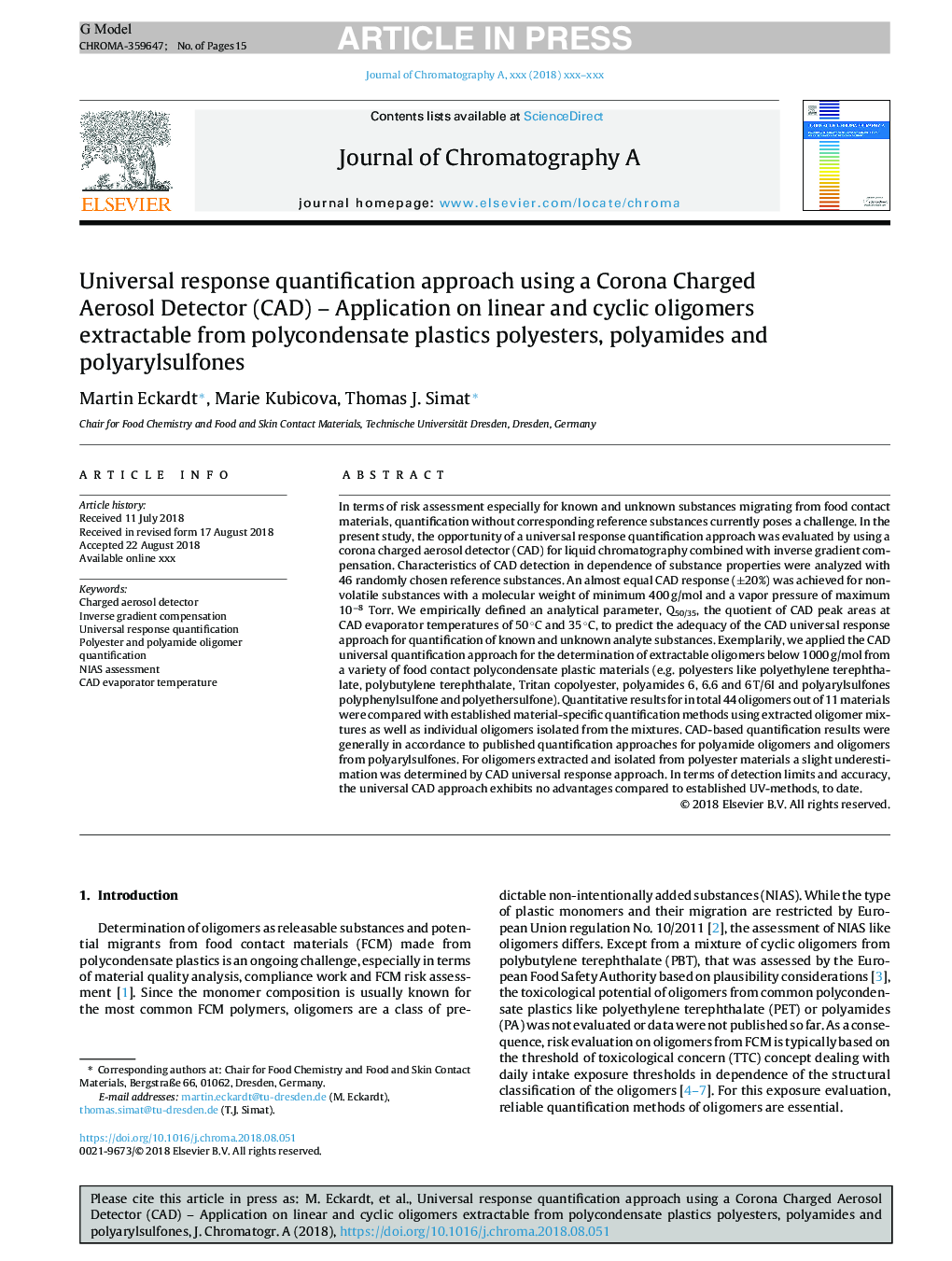| Article ID | Journal | Published Year | Pages | File Type |
|---|---|---|---|---|
| 10154449 | Journal of Chromatography A | 2018 | 15 Pages |
Abstract
In terms of risk assessment especially for known and unknown substances migrating from food contact materials, quantification without corresponding reference substances currently poses a challenge. In the present study, the opportunity of a universal response quantification approach was evaluated by using a corona charged aerosol detector (CAD) for liquid chromatography combined with inverse gradient compensation. Characteristics of CAD detection in dependence of substance properties were analyzed with 46 randomly chosen reference substances. An almost equal CAD response (±20%) was achieved for non-volatile substances with a molecular weight of minimum 400âg/mol and a vapor pressure of maximum 10â8 Torr. We empirically defined an analytical parameter, Q50/35, the quotient of CAD peak areas at CAD evaporator temperatures of 50â°C and 35â°C, to predict the adequacy of the CAD universal response approach for quantification of known and unknown analyte substances. Exemplarily, we applied the CAD universal quantification approach for the determination of extractable oligomers below 1000âg/mol from a variety of food contact polycondensate plastic materials (e.g. polyesters like polyethylene terephthalate, polybutylene terephthalate, Tritan copolyester, polyamides 6, 6.6 and 6âT/6I and polyarylsulfones polyphenylsulfone and polyethersulfone). Quantitative results for in total 44 oligomers out of 11 materials were compared with established material-specific quantification methods using extracted oligomer mixtures as well as individual oligomers isolated from the mixtures. CAD-based quantification results were generally in accordance to published quantification approaches for polyamide oligomers and oligomers from polyarylsulfones. For oligomers extracted and isolated from polyester materials a slight underestimation was determined by CAD universal response approach. In terms of detection limits and accuracy, the universal CAD approach exhibits no advantages compared to established UV-methods, to date.
Keywords
Related Topics
Physical Sciences and Engineering
Chemistry
Analytical Chemistry
Authors
Martin Eckardt, Marie Kubicova, Thomas J. Simat,
